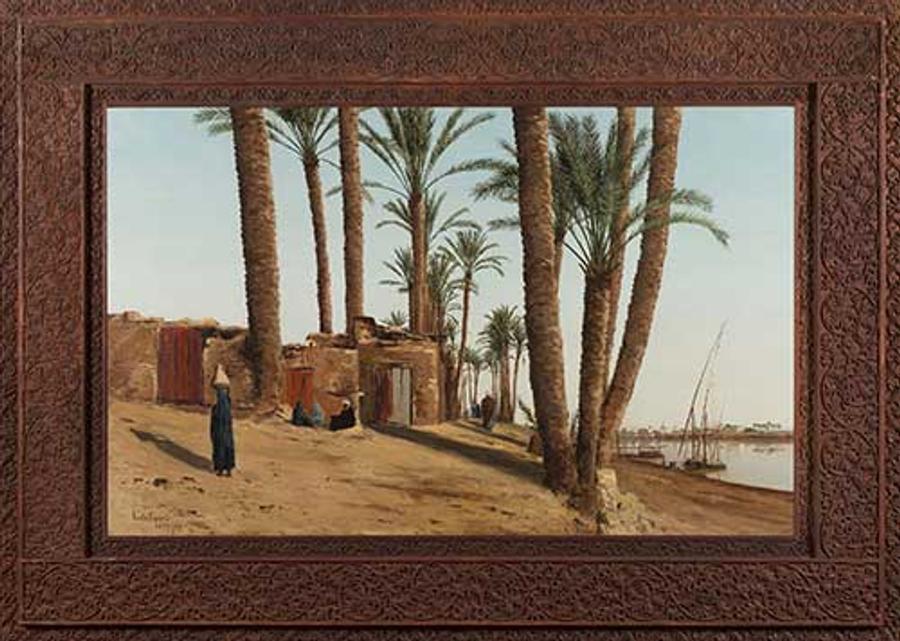
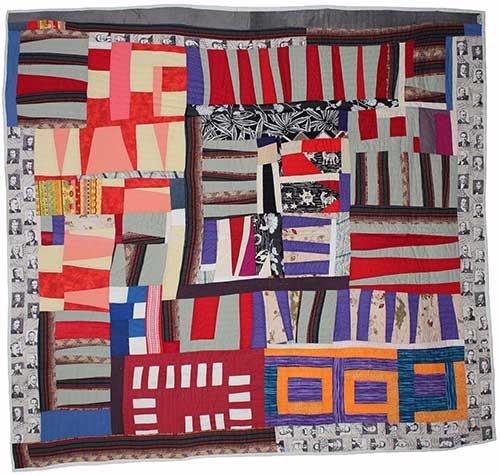
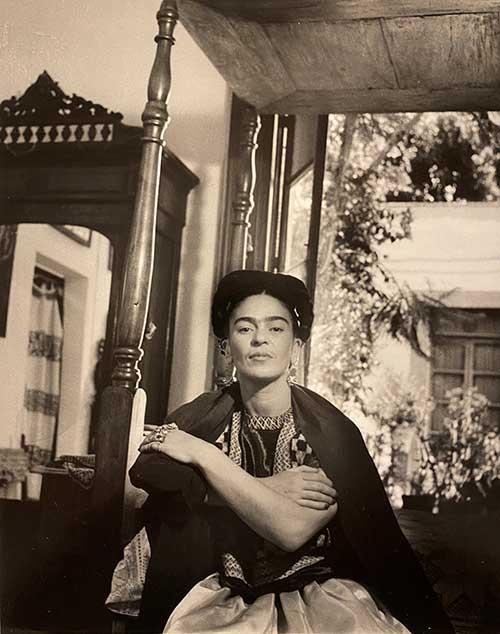
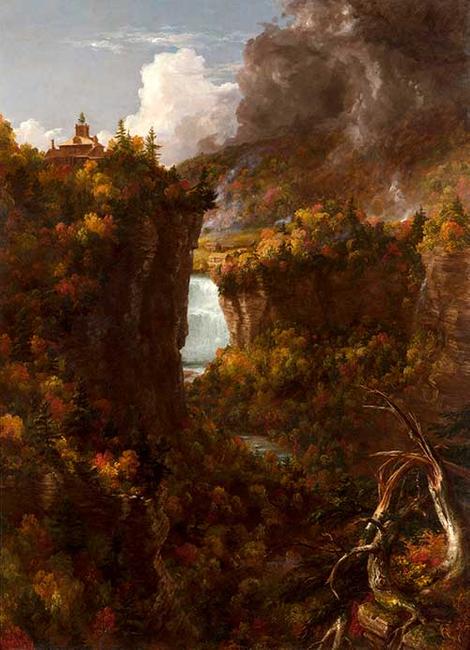
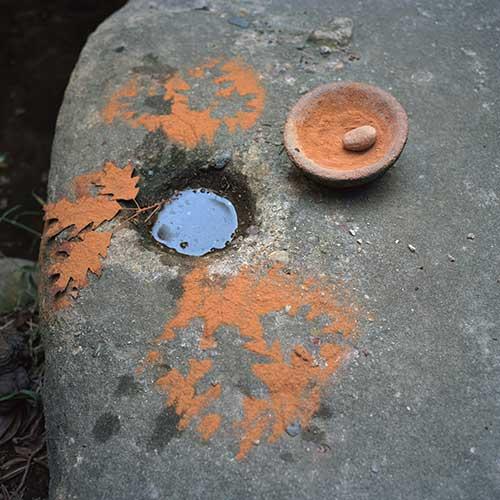
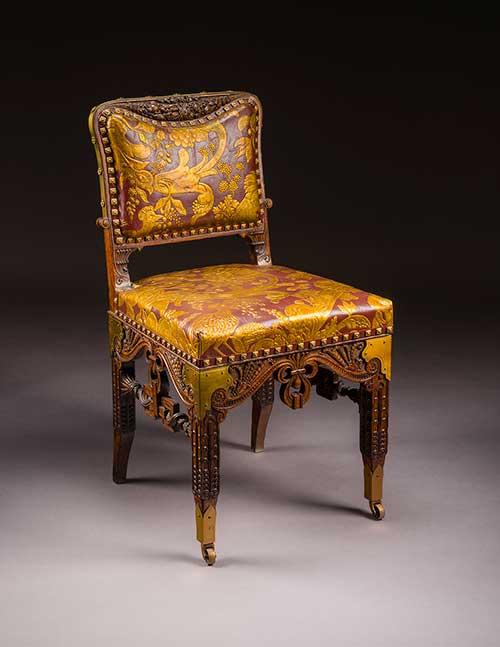
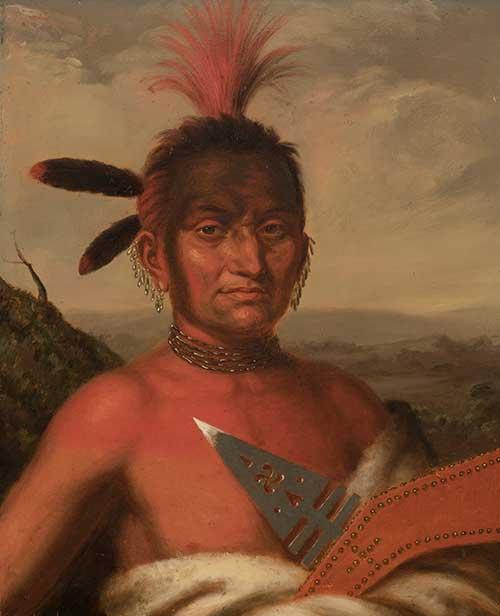
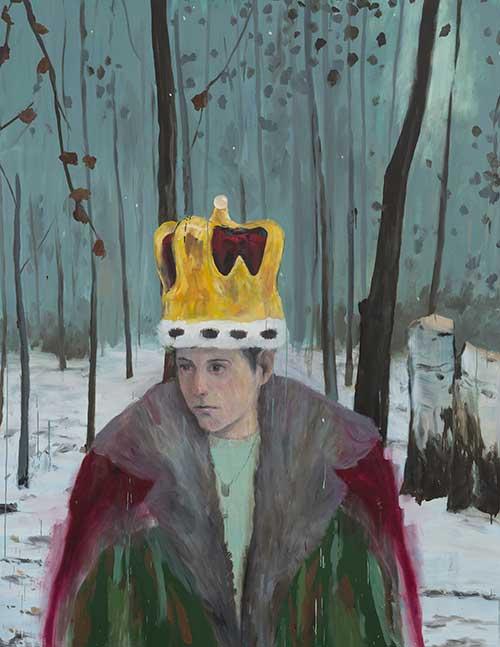
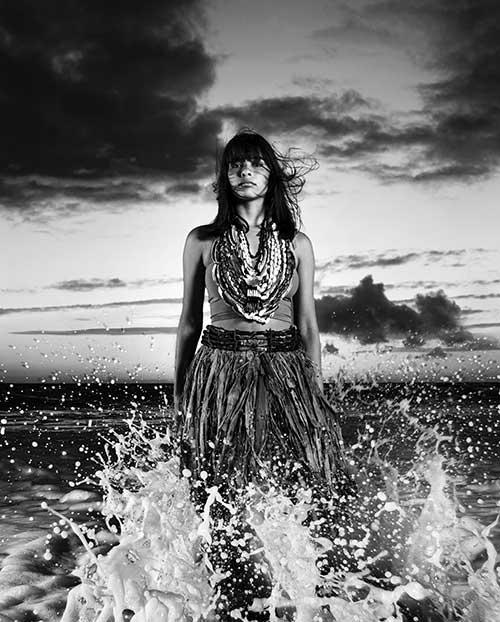
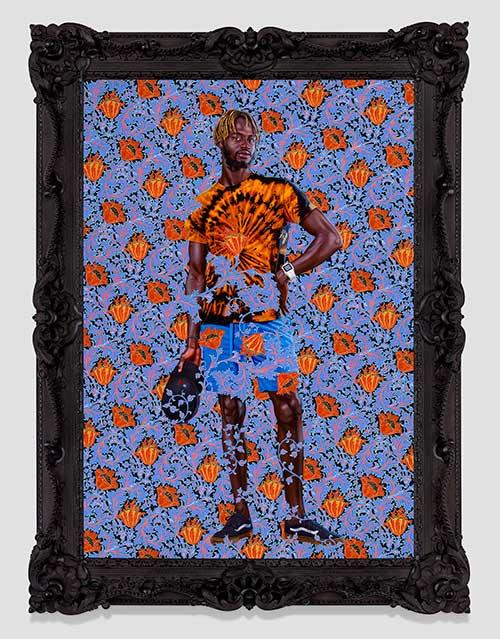
In 2021, The Huntington Library, Art Museum, and Botanical Gardens acquired more than 50 important works of art by a wide range of artists from North America. The acquisitions contribute to a more expansive story of American art, adding hemispheric and global perspectives and diversity to the collection. Beyond the previously announced acquisitions of Thomas Cole’s Portage Falls on the Genesee (1839) and Kehinde Wiley’s A Portrait of a Young Gentleman (2021), additional works by women, Native American, African American, Latinx, and Latin American artists, among others, joined the collection. In media ranging from painting to photography to quilting, the new acquisitions span more than a century and represent an array of styles. Many of the acquisitions will go on view in the “Borderlands” reinstallation of a portion of the Virginia Steele Scott Galleries of American Art, which opens on Nov. 20.
The Huntington acquired two quilts by Mary Lee Bendolph, a member of the multigenerational community of African American quiltmakers of Gee’s Bend, Alabama. Diner (2004) and Image of Formal Presidents (2009) consist of bold shapes, irregular patterns, and dramatic juxtapositions of color. Diner is an example of Bendolph’s distinctive, geometric, and colorful style. Image of Formal Presidents, initially conceived by Bendolph as a gift to President Barack Obama and first lady Michelle Obama at the time of the 2009 inauguration, incorporates fabric printed with the faces of U.S. presidents. The works add to The Huntington’s group of 32 prints made by Bendolph and Gee’s Bend quiltmakers Louisiana Bendolph (Mary Lee’s daughter-in-law) and Loretta Pettway, which were acquired in 2019 in partnership with Paulson Fontaine Press in Berkeley, Calif. These works expand on The Huntington’s existing collecting areas, such as the historic American quilts from the Fielding and Gail-Oxford collections, and complement the many likenesses of U.S. presidents in the Art Museum and the Library’s collections.
Lola Álvarez Bravo (born Dolores Martínez de Anda in Lagos de Moreno, Jalisco) was one of the leading photographers in Mexico, a key figure in intellectual circles, and one of the most independent female artists of her time. This acquisition establishes The Huntington as one of the major homes in the United States of photographs by Bravo, who has been increasingly recognized for her important contributions to the history of photography. The acquisition includes iconic images, such as Let’s See Who Can Hear Me, Homage to Salvador Toscano, and The Dream of the Poor II, as well as rarely seen photographs and unique prints. The photographs represent the variety of her printing styles and mounts and feature an expansive range of subjects, including archaeological sites, modernist architecture, and portraits of intellectuals and artists, such as Frida Kahlo (shown). Spanning the 1930s to the 1960s, Bravo’s work complements The Huntington’s renowned collection of 500 photographs by Edward Weston, one of Bravo’s key influences. The acquisition also includes vintage prints of portraits by her husband, Manuel Álvarez Bravo, taken in the 1930s.
A major acquisition made through a new partnership with The Ahmanson Foundation, Portage Falls on the Genesee is a large, dramatic painting of the Genesee River Valley in upstate New York that captures the epic scale and sublime Romanticism of the Hudson River School, of which Thomas Cole is considered the founder. It is the first work by Cole to join The Huntington’s significant holdings of Hudson River School painting, which includes Chimborazo by Frederic Edwin Church, Cole’s most accomplished student. Cole’s work also relates to The Huntington’s British collections through John Constable’s View on the Stour near Dedham, among others. A lyrical tribute to the natural world and a warning about humankind’s effects on it, Portage Falls on the Genesee resonates with The Huntington’s world-class botanical collection as well as the Library’s historic collections. The painting belonged to William H. Seward, who later served as secretary of state under Abraham Lincoln. The Huntington’s library holdings are rich in materials on the history of New York and contain many items that document Seward’s life and career, as well as travel narratives and early environmental writing. Portage Falls on the Genesee will be on view in “Borderlands,” opening Nov. 20.
Mercedes Dorame uses photography and installation works to explore, re-imagine, and connect to her Tongva culture and bring visibility to contemporary Indigenous experience. Well of Moon and Sky—Kotuumot Kehaay centers on an ancient grinding bowl carved into a boulder at a sacred Tongva site in a canyon in Los Angeles that’s now private land. The bowl once was used for grinding food, like acorns, or possibly pigments. For the photograph, Dorame arranged on the boulder a ceramic metate, or grinding bowl, that belonged to her grandmother, alongside leaves from an oak tree and the remnants of ground cinnamon, used to evoke the pigment red ochre. The ancient carved bowl, or “well,” in the boulder is filled with water that reflects an image of the sky. Well of Moon and Sky—Kotuumot Kehaay will be on view in “Borderlands,” opening Nov. 20.
Drawn from Lockwood de Forest’s travels in Egypt, this painting evokes a still, sun-drenched afternoon on the bank of the Nile. The son of an elite New York family in the shipping industry, de Forest was one of the first American artists to travel in Egypt, following fellow landscape painter Frederic Edwin Church, who was de Forest’s great-uncle through marriage. De Forest lived in British-occupied India in the 1880s, founding the Ahmedabad Wood Carving Company, which sourced traditional woodwork from master craftsmen in India. He imported the woodwork into the United States in partnership with Louis Comfort Tiffany, whose works are also in The Huntington’s collection. The original, elaborately carved teakwood frame that de Forest commissioned from Indian craftsmen for this rare studio painting speaks to the complex relationship between art, design, and the global economy at the end of the 19th century. Bank of the Nile, Opposite Cairo, Egypt will be on view in “Borderlands,” opening Nov. 20.
Herter Brothers, headed by German émigré Gustave Herter (1830–1898) and his half-brother Christian (1839–1883), produced some of New York’s finest furniture in a rich and eclectic array of styles during the post–Civil War era. The brothers served a wealthy clientele that included William H. Vanderbilt, Jay Gould, and J. Pierpont Morgan, among others. In 1880, the firm secured the commission from Vanderbilt to design, decorate, and outfit the interiors of his massive Fifth Avenue mansion in New York City. Each room of the residence was designed with its own theme, with the dining room in the Renaissance revival style and decorated with elegantly carved oak furniture with brass and gilt highlights. The Huntington’s dining chair from that room features carved oak with swags of flora and fauna on the top back rail. It also features elaborately embossed and gilt leather upholstery. It is one of only seven remaining of the original 18 chairs in the set. The chair will be on view in “Borderlands,” opening Nov. 20.
A transformational addition to The Huntington’s American art collection, Moanahonga (Great Walker), An Ioway Chief is the first major portrait of an Indigenous leader and the institution’s first work by the important American artist Charles Bird King to join the holdings. The painting depicts a leader of the Ioway nation around 1824, when the Ioway territory extended from the current state of Iowa along the Mississippi River north to Minnesota, south to Missouri, and west to Nebraska. The portrait emphasizes Moanahonga’s markers of leadership and power—his extraordinary gunstock war club with pierced decoration on the iron blade, his tufted deerskin headdress, red-tipped feathers, silver and shell jewelry, and his body paint in red and black, all referring to his status and skill as a warrior. The portrait is also distinguished by its delicately painted landscape background, an element absent from most of King’s compositions. The painting is one of more than 100 portraits of Native American leaders that the U.S. government commissioned from King. Moanahonga (Great Walker), An Ioway Chief will be on view in “Borderlands,” opening Nov. 20.
One of Enrique Martínez Celaya’s most significant paintings, The Crown depicts a young boy standing alone in a snowy birch forest. In the distance, a glow that may be moonlight enhances both the beauty of the scene and the solitude of the landscape. The image seems to represent a fable or a fairy tale. The painting will be on view in spring 2022 as part of an exhibition of the artist’s work at the USC Fisher Museum of Art. Two of Martínez Celaya’s large-scale outdoor sculptures are currently on view at The Huntington. The artist, who is The Huntington’s Fellow in the Visual Arts 2020–22, is painting a major mural and contributing additional works that will be on view in “Borderlands,” opening Nov. 20.
A Chemehuevi artist born in Los Angeles, Cara Romero is one of the most widely recognized Indigenous photographers working today. Her photographs explore themes of invisibility, survival, and the power of place from a California Indigenous perspective. Hermosa is a portrait of her daughter Crickett Tiger at Hermosa Beach, dressed in the regalia of the coastal peoples of California. It evokes the Chemehuevi myth of Great Ocean Woman (Hutsipamamow) and the oral histories of Los Angeles and the California coast as a place of creation—and as a sacred place. The photograph resulted from a series of images that appeared on billboards across Los Angeles in the summer and fall of 2021, created in collaboration with intertribal California First Peoples, Tongva artists, and cultural leaders. The images pay homage to the city of Los Angeles, which is today home to one of the largest urban populations of Indigenous peoples in the nation, and to the original caretakers of this region—first known as Tovaangar. Hermosa will be on view in “Borderlands,” opening Nov. 20.
A new work commissioned by The Huntington from renowned contemporary American artist Kehinde Wiley, A Portrait of a Young Gentleman debuted this year in the historic Thornton Portrait Gallery, across from Thomas Gainsborough’s iconic painting The Blue Boy (ca. 1770). Inspired by The Blue Boy, and using the same title that Gainsborough originally used for his painting, Wiley’s A Portrait of a Young Gentleman is a large-scale work in the Grand Manner style. Wiley has long talked about the role The Huntington played in his formative years as an artist growing up in Los Angeles. When he was young, his mother enrolled him in art classes and brought him to The Huntington, where he encountered a formidable collection of British Grand Manner portraits—monumental depictions of England’s 18th- and 19th-century noble class. The portraits made such an impression on Wiley that he would later incorporate their stylistic representations of wealth, glory, and power into his own artistic practice, focusing on the Black and brown bodies missing from the museums he visited. A Portrait of a Young Gentleman is currently on view in the Huntington Art Gallery.